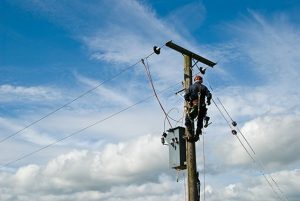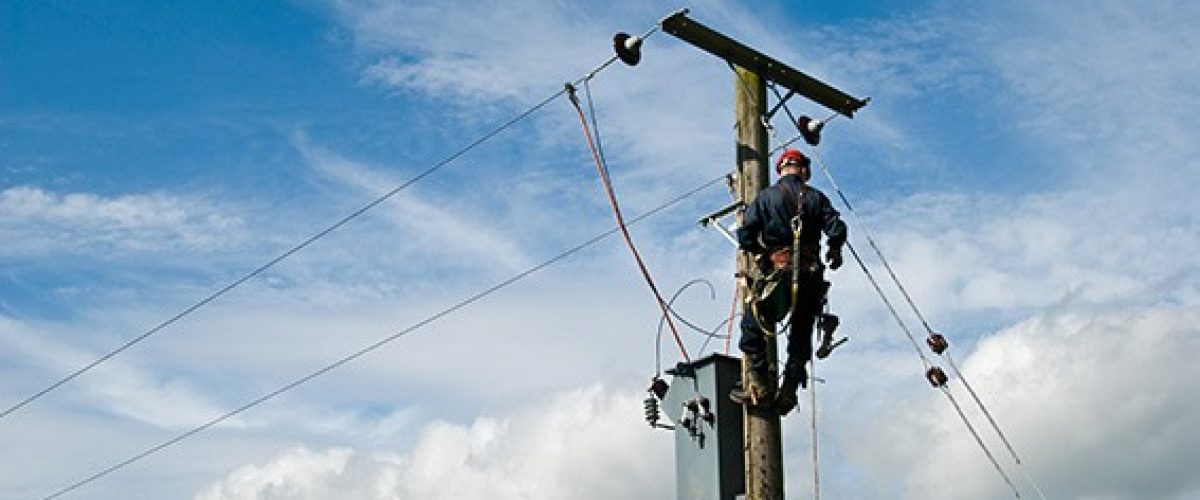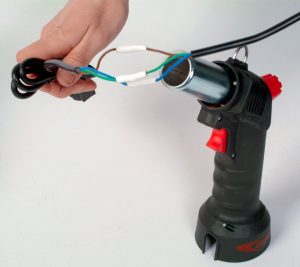ENEDIS agents regularly work on the electricity poles, at a height of more than 25 meters, to carry out two main activities: connections to the power grid and regular checking of the condition of the distribution network equipment. Welding work is frequent and only a cordless torch can carry out this task.
The mission of ENEDIS employees
 The mission of the ENEDIS agents who work on the electricity poles is to maintain the networks. This includes connection and coupling that brings the electricity from the point of generation to the point of consumption: private homes, public lighting networks, offices, shops, factories, industrial complexes… This includes working on overhead networks (high voltage HV) and on the public lighting network.
The mission of the ENEDIS agents who work on the electricity poles is to maintain the networks. This includes connection and coupling that brings the electricity from the point of generation to the point of consumption: private homes, public lighting networks, offices, shops, factories, industrial complexes… This includes working on overhead networks (high voltage HV) and on the public lighting network.
The agents are often versatile, as they have to master electricity, masonry, cable laying… They have to equip transformers, substations, cabinets and boxes and ensure electrical connections. They then participate in the testing and commissioning of the network.
Working on poles
The engineer climbs up the pole with climbers, on a ladder or is lifted by a cherry picker to arm the pole (installation of insulators and lightning arresters) and tighten the cables he connects by splicing or welding. He bolts the metal elements of the pylons to the ground, secures the insulator chains and the uncoiling pulleys to the brackets.
The engineer climbs the pylon after it is in place and climbs up on his console, which can be 15 to 40 m high. He uses a hook ladder to access the insulators to ensure the passage of the cable, allowing the conductor cable to be unwound later on to the winch.
He works on connecting the cables together by sleeving them to the hydraulic press and also uses a cordless torch.
In order to find the cause of a breakdown when the operation of the installations is interrupted, the engineers must regularly replace a cable, insulator or the damaged supports, which again involves working with a cordless torch. He must also carry out aluminothermic welding in electrical transformers.
Welding on ENEDIS poles
Welding work on ENEDIS poles is usual and very varied, as it involves different types of materials. The Guilbert Express cordless torch is ideal for this job, as it meets all requirements: autonomous, light, handy, adjustable temperature, usable in all positions and with a satisfactory autonomy.
What is the work on the poles
For welding in electrical transformers, after very carefully cleaning the materials to be welded, the engineer places a mould with pliers and then heats it with his cordless torch to remove all traces of moisture.
He places the conductors to be soldered, making sure that the mould is perfectly watertight. If necessary, he uses putty. After placing the metal disc at the bottom of the mould crucible, he then pours the filler metal, then over the ignition powder, leaving part of it spill on the edge of the mould to promote ignition.
He still has to close the mould and create a spark with the igniter to the ignition powder. One minute after the end of combustion, he reopens the mould and removes the slag, using a scraper, a brush, and a paintbrush.
Once the welding is finished, the mould is reusable, provided it is always clean and dry.

